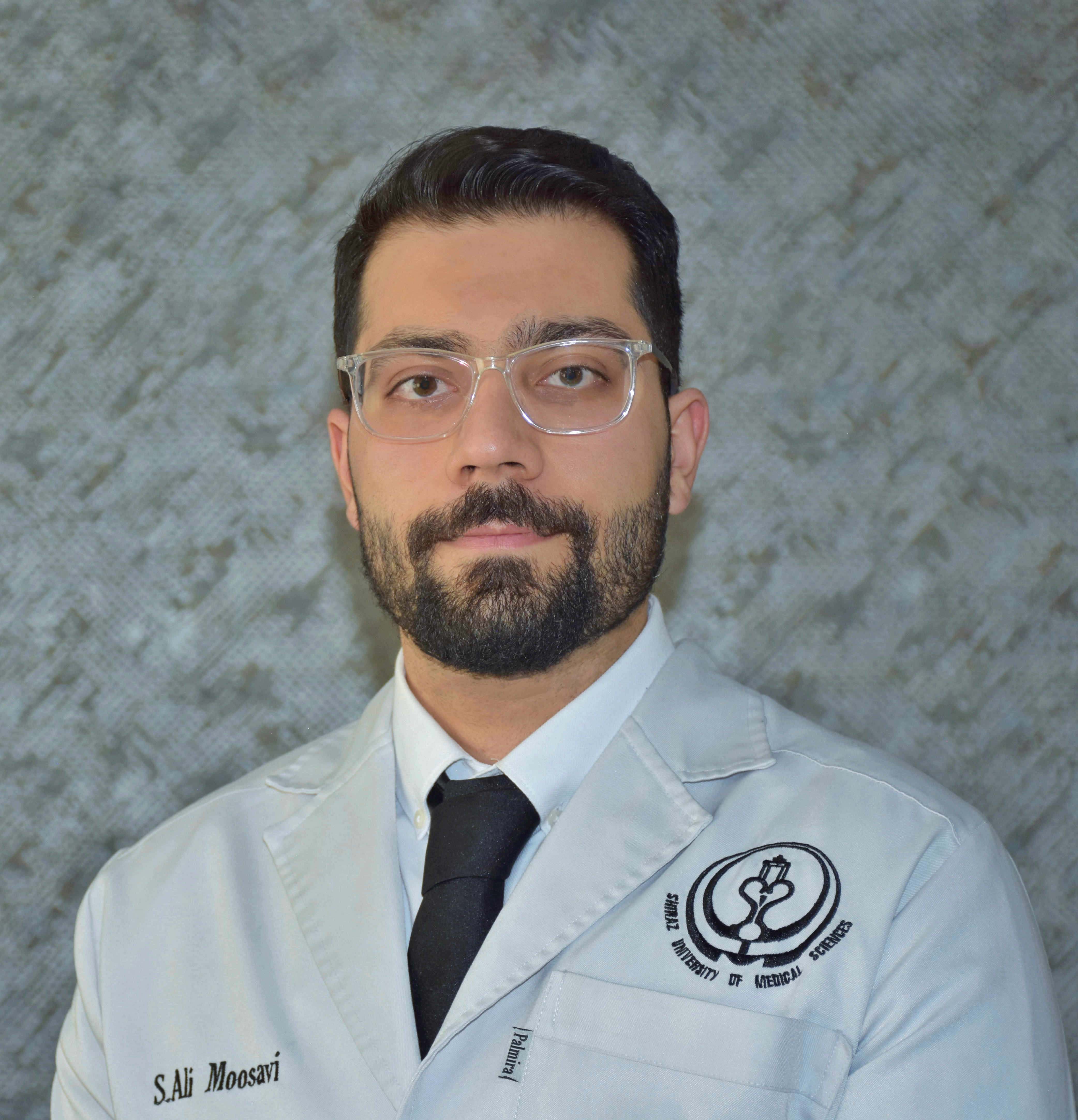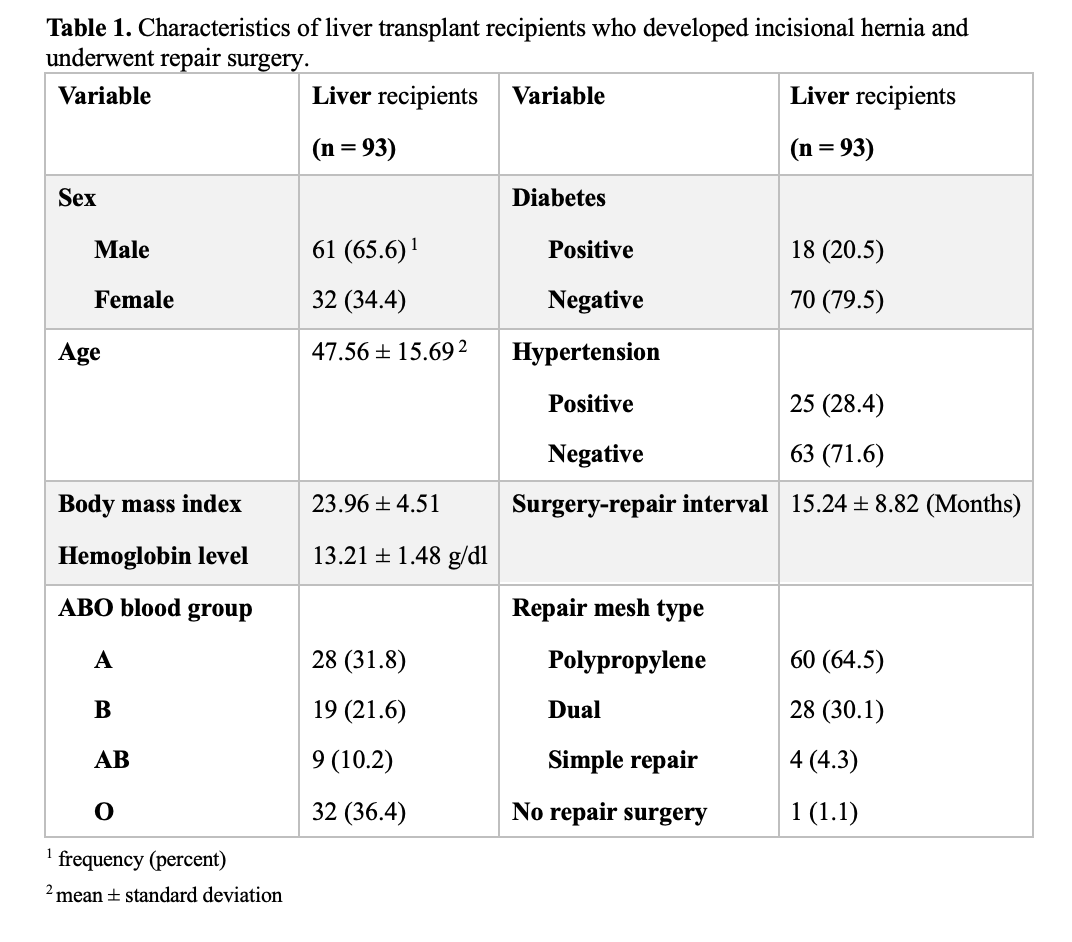
Comparison of polypropylene and dual mesh repair methods for incisional hernias post-liver transplantation: A retrospective cohort study
Alireza Shamsaeefar1, Bahram Amiri1, Seyed Ali Moosavi2, Hamed Nikoupour1, Kourosh Kazemi1, Sahar Sohrabi Nazari1, Saman Nikeghbalian1, Nasrin Motazedian2, Seyed Ali Malekhosseini1.
1Abu-Ali Sina Organ Transplant Center, Shiraz University of Medical Sciences, Shiraz, Iran; 2Transplant Research Center, Shiraz University of Medical Sciences, Shiraz, Iran
Introduction: Incisional hernias, common after abdominal surgeries, pose significant postoperative challenges, leading to morbidity. Patient-related factors like diabetes, renal failure, and obesity, alongside procedural risks such as wound infection and closure techniques, contribute to their multifactorial etiology. Liver transplant recipients face additional risk factors, including immunosuppression, which enhances hernia development rates. Despite advancements, selecting optimal mesh types and surgical techniques remains complex. This study aims to evaluate polypropylene and dual mesh repair methods' incidence and complications post-liver transplantation, offering insights into effective post-transplant hernia repair strategies.
Method: Participants in this retrospective cohort study were liver transplant recipients at Abu-Ali Sina Hospital in Shiraz, Iran. Inclusion criteria involved patients with hernias larger than 2 cm who underwent elective open repair with either polypropylene or dual mesh post liver transplantation. Data collection encompassed demographic and clinical variables, including recurrence, hematoma, and infection rates, monitored for 18 to 36 months. Statistical analysis employed descriptive statistics and multivariable logistic regression to identify factors influencing post-transplant hernia repair complications.
Results: Among 1,528 liver transplantation surgeries (924 males and 604 females), a total of 93 (5.09%) liver transplant patients, with a mean age of 47.56 ± 15.69 years (65.6% male), had developed incisional hernia from March 2018 to August 2020. Among them, 28 (30.1%) had undergone open repair with dual mesh, 60 (64.5%) with polypropylene mesh, and 4 (4.3%) with simple repair, and one (1.1%) recipient did not undergo repair surgery. Among the transplant patients who had undergone incisional hernia repair open surgery, 19 (21.5%), 7 (7.9%), and zero had developed recurrence, infection, and hematoma, respectively. There were no statistically significant differences between the polypropylene mesh and dual mesh groups in age, body mass index, ABO blood group, diabetes, hypertension, hemoglobin level, and surgery-repair interval. No statistically significant differences were found between the polypropylene mesh and dual mesh groups regarding the rates of recurrence (P = 0.782) and infection (P = 0.423). The type of mesh used for incisional hernia repair was not an independent variable for the occurrence of complications after incisional hernia repair in post-liver transplant patients (B: 0.542; SE: 0.679; P: 0.425; OR: 1.719; 95% CI: 0.454, 6.510).
Conclusion: Both polypropylene and dual mesh repair methods are effective and safe for incisional hernias post-liver transplantation. While dual mesh exhibited a slightly lower incidence of recurrence and infection, the differences were not statistically significant. Further research should explore optimal repair strategies to enhance outcomes in this patient population.


[1] Incisional hernia, Hernioplasty, Mesh, Dual mesh, Polypropylene mesh, Wound infections, Hernia recurrence, Outcome, Complications, Liver transplantation
